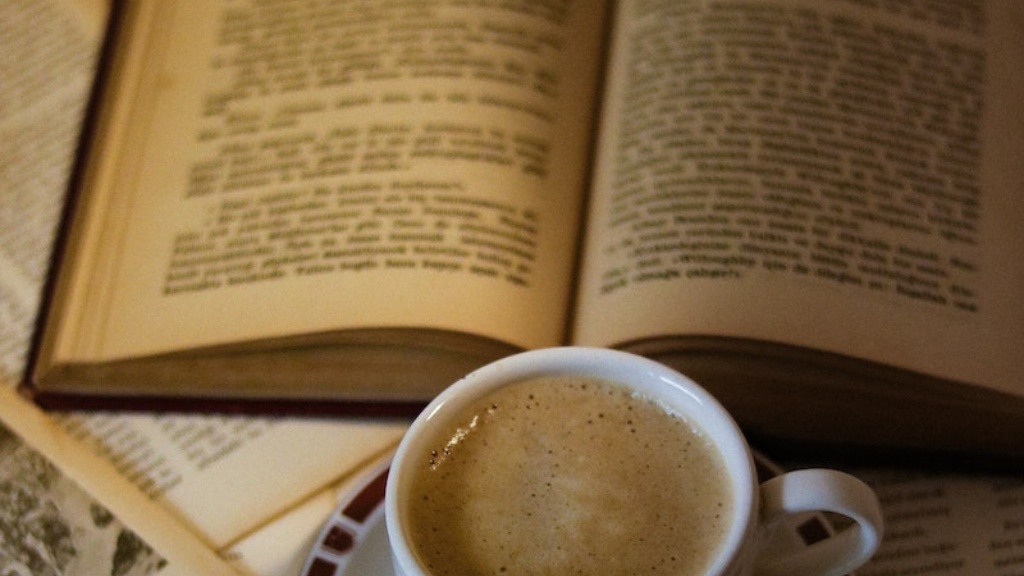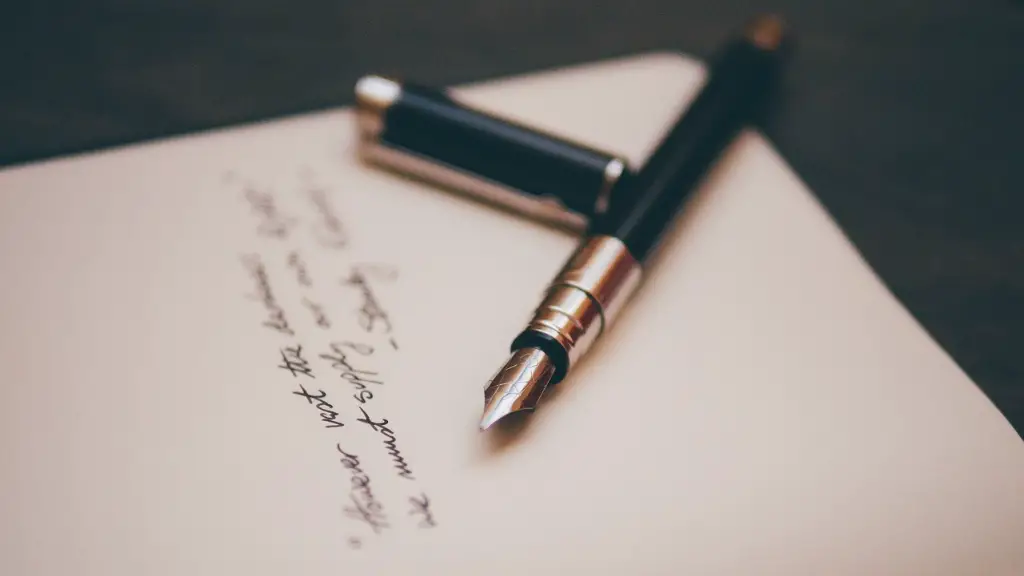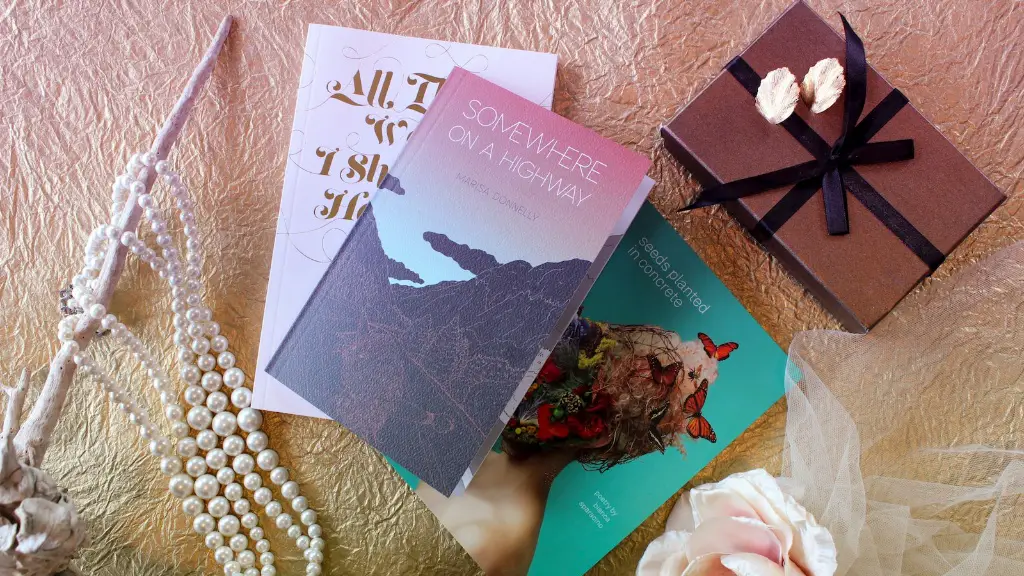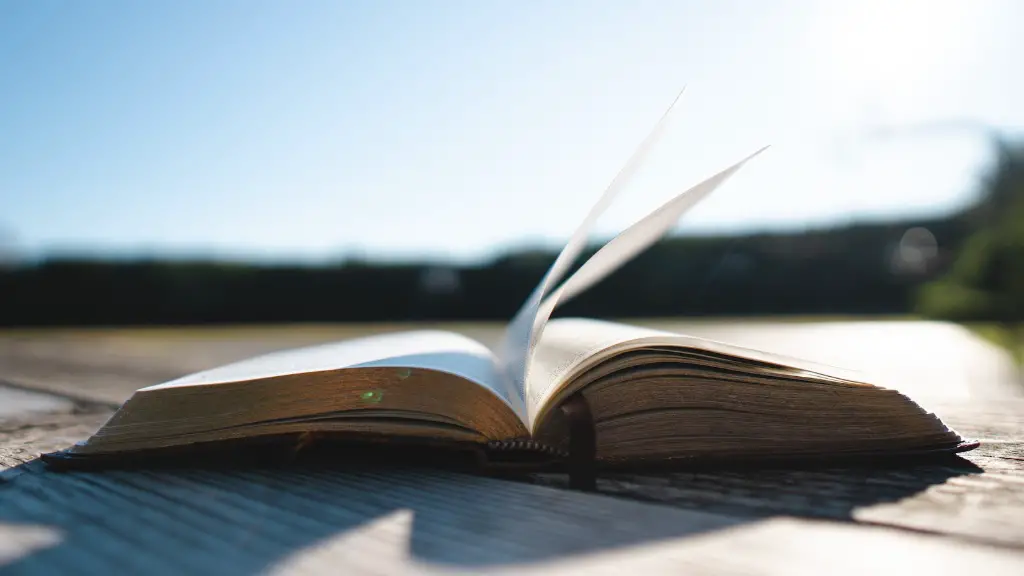Definitions
Poetry is a form of literary art which uses words to create a vivid image. It has the power to express complex emotions, as well as create meaningful connections between words, thoughts and ideas. Poetry can also evoke strong feelings and inspire readers to think and reflect upon the poem’s deeper meanings. Throughout history, poets have used the art of the poem to explore life’s mysteries, to create beauty, to influence culture and to move people. Although poetry varies greatly in form, length and subject matter, some common characteristics of poetry can be identified.
Rhythm and Meter
Rhythm and meter are both essential elements of poetry. Rhythm is created by the repetition of syllables or sounds within a line. Meter is the pattern of these repeated syllables, often expressed in syllables per line. A pattern of stressed and unstressed syllables may also be used to create meter. Poets use rhythm and meter to rhythmically express the poem’s ideas and to make the poem more lyrical.
Imagery
Imagery is an important characteristic of poetry. It is the use of vivid, descriptive language that creates mental images in the reader’s mind. Poets use descriptive language to convey details of a particular scene, to express emotions, to create mental pictures and to elicit an emotional response. Imagery is sometimes used to imply or suggest meaning beyond the literal words, often creating a sense of the atmosphere or the mood of the poem.
Figurative Language
Figurative language is a tool used by poets to describe things in an imaginative and creative way. It includes simile, metaphor, hyperbole and personification. Similes compare two things using the words “like” or “as”, while metaphors make a comparison without using those words. Hyperbole is an exaggeration for effect, and personification is the act of attributing human qualities to non-human things. Through the use of figurative language, poets can draw the reader’s mind to a particular idea or create a more vivid image.
Sound Devices
Sound devices are used to create rhythm, atmosphere and to emphasize ideas in poems. They may include alliteration, assonance, consonance, onomatopoeia, and rhyme. Alliteration and assonance are the repetition of certain consonant and vowel sounds throughout the poem. Consonance is the repetition of consonant sounds, while onomatopoeia is the use of words that imitate the sound they describe. Finally, rhyme is the repetition of identical or similar sounds at the ends of words.
Theme
Theme is the central idea or message that a poet is trying to communicate through the poem. Poems may explore themes of love, loss, nature, death, relationships, and other topics. By exploring these themes, poets are able to express their own personal experiences. Poems may also use symbols or metaphors to explore the deeper meaning of their themes.
Poetic Form
Poetic form is a term used to refer to specific patterns of rhythm, meter and stanza form, and to the conventions of a given type of poetry. Different forms of poetry have set rules and conventions that poets must use when crafting a poem. For example, some forms of poetry, such as the sonnet, require specific structure and rhyme schemes. Other forms, such as free verse, do not require any specific structure. Poetic form is an important element in poetry and can influence the tone and overall message of the poem.
Importance of Writing Poetry
Poetry has the power to engage, inspire, and prompt thought. Writing poetry can help writers explore and express their emotions and ideas in a way that can be difficult to do in other forms of writing. Writing poetry can also be a form of meditation and thought. It can be a way of connecting with one’s inner self, exploring inner thoughts and feelings, and reflecting on life’s experiences.
Developing a Poetry Writing Practice
Getting started with writing poetry can be intimidating, but there are a few simple steps that can help make the process easier. One important step is to find a quiet, comfortable place where you can write without distractions. It can also help to have a notebook or journals with you to jot down ideas and inspiration. Start by reading poetry that speaks to you, writing exercises or prompts to get you thinking, and taking time to reflect on your thoughts and feelings. Finally, don’t put too much pressure on yourself; the most important thing is to enjoy the writing process.
How to Read Poetry
Reading poetry can be an enjoyable experience, but can also be challenging. It is important to take the time to fully explore the poem. Read the poem aloud to hear the sound of the words and feel a connection to the poem. Try to identify the poem’s themes and messages, and consider how they make you feel. Pay attention to words, phrases, images and symbols, and how they contribute to the poem’s overall meaning. Finally, take the time to think about what the poem means to you.
Significance of Poetry
Poetry has been an important form of communication and expression throughout history. It has the power to evoke strong emotions and inspire change. Poetry can move us, challenge us, and make us think about the world around us. It has been used to explore complex ideas, to convey messages of love, to tell stories, to pass down cultural values, and to remember the past. It is an art form that has shaped cultures, nations and individuals in meaningful ways.
Different Types of Poetry
Poetry takes many forms, from traditional and ancient forms such as the sonnet and haiku, to more modern forms like free verse and concrete poetry. Traditional forms often have specific guidelines for form and even rhyme scheme, while free verse and other modern forms often have less structure. Different types of poetry can be used to tell stories, express emotions, or simply explore language. No matter the type of poetry, it is a powerful tool for expressing ideas, emotions and stories.
Benefits of Poetry
As well as being a powerful form of expression, poetry can have many other benefits. Writing poetry can help with self-expression and emotional wellbeing. It can also help improve language and writing skills, and can even improve memory and empathy. Poetry can also be used to provide mental health support and to help process difficult emotions. Finally, reading and writing poetry can be an enjoyable and rewarding experience for both the reader and the writer.
Accessibility of Poetry
Poetry is an art form that anyone can enjoy and engage with. There are many ways to access poetry, from reading classic works of poets such as William Shakespeare and Emily Dickinson, to reading contemporary poems by living writers such as Warsan Shire and Pablo Neruda, to reading online and finding new voices. Poetry is accessible to everyone, and anyone can enjoy the beauty and emotion of a poem.



